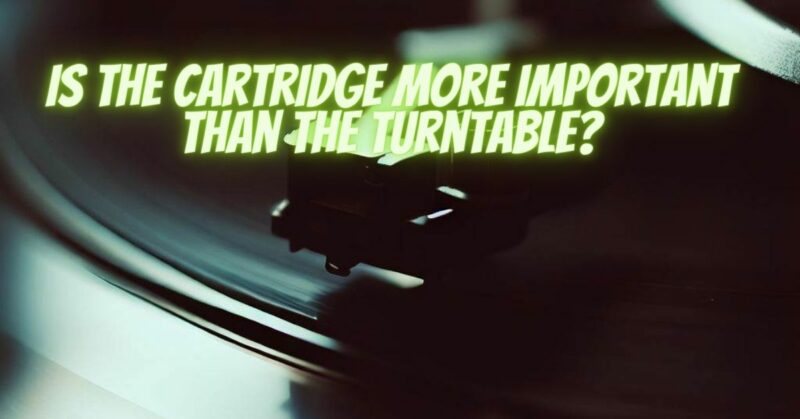In the world of high-fidelity audio, the debate over the importance of components often takes center stage. Among the pivotal components of a vinyl playback system, the turntable and the cartridge are two fundamental elements that dictate the overall sonic experience. In this exploration, we delve into the question of whether the cartridge holds more significance than the turntable itself in shaping the quality of audio reproduction.
Understanding the Turntable’s Role: The turntable serves as the foundation of any vinyl playback system, responsible for spinning the vinyl record at a consistent speed and translating the groove’s mechanical vibrations into an electrical signal. Turntable components such as the plinth, platter, motor, and tonearm collectively contribute to the device’s ability to deliver accurate and stable rotation. A high-quality turntable provides a stable platform for the cartridge to extract detailed audio information from the record.
The Cartridge’s Vital Role: On the other hand, the cartridge is the component responsible for directly interacting with the record grooves. It converts the mechanical vibrations picked up from the stylus into electrical signals that are then amplified and delivered through speakers. Cartridges come in various types, including moving magnet (MM) and moving coil (MC), each offering unique sonic characteristics. The choice of cartridge significantly influences the tonal balance, clarity, and overall fidelity of the audio playback.
The Importance of Balance: While both the turntable and the cartridge play critical roles in the vinyl playback chain, achieving a harmonious balance between the two is key to unlocking optimal audio performance. A high-quality turntable with precision engineering can enhance the accuracy of the playback process, ensuring that the cartridge can faithfully reproduce the intricate details encoded in the record grooves.
Significance of Tracking Force and Alignment: The performance of a cartridge is intricately linked to the setup and alignment on the tonearm. Factors such as tracking force, anti-skating, and azimuth alignment must be meticulously calibrated to ensure the stylus accurately traces the grooves without causing excessive wear or distortion. An expertly set up turntable-cartridge combination maximizes the potential for faithful audio reproduction.
Budget Considerations: For audiophiles on a budget, the decision between investing in a high-end turntable or an upgraded cartridge can be challenging. In some cases, a mid-range turntable with a high-quality cartridge may deliver superior performance compared to an expensive turntable paired with a basic cartridge. Budget constraints often necessitate a thoughtful approach to component upgrades, considering the overall system synergy.
In the perpetual pursuit of audio excellence, the interplay between the turntable and the cartridge is a complex and nuanced consideration. While the turntable provides the mechanical foundation for vinyl playback, the cartridge acts as the gateway to translating analog signals into musical bliss. Ultimately, the importance of one over the other depends on the specific goals and preferences of the audiophile. Achieving a harmonious balance between the turntable and cartridge is the key to unlocking the full sonic potential of vinyl records, ensuring a truly immersive and authentic listening experience.

